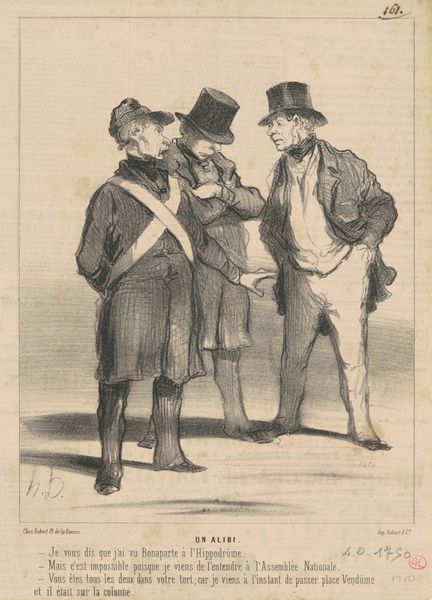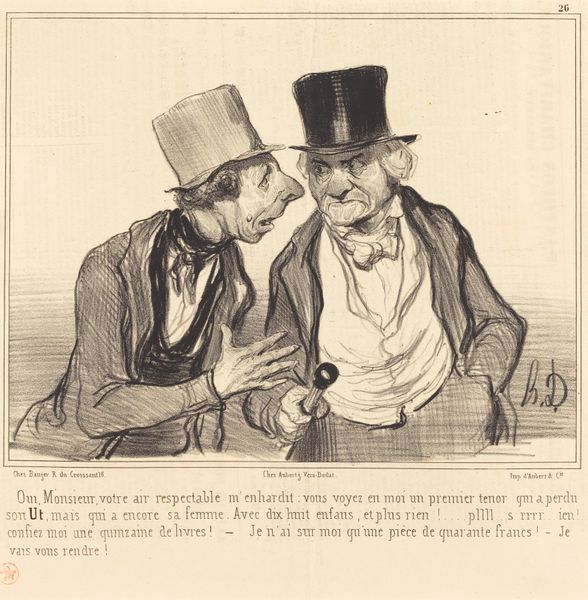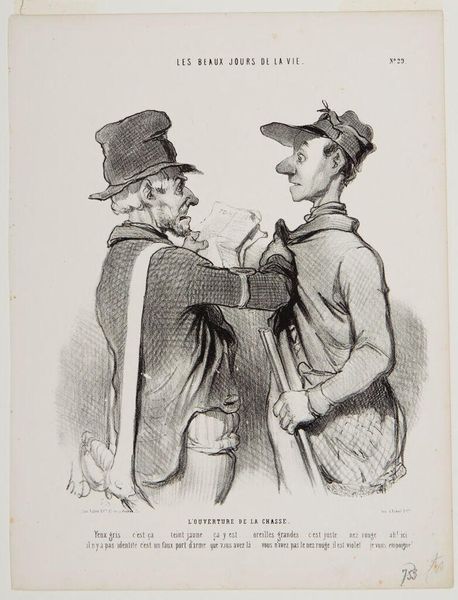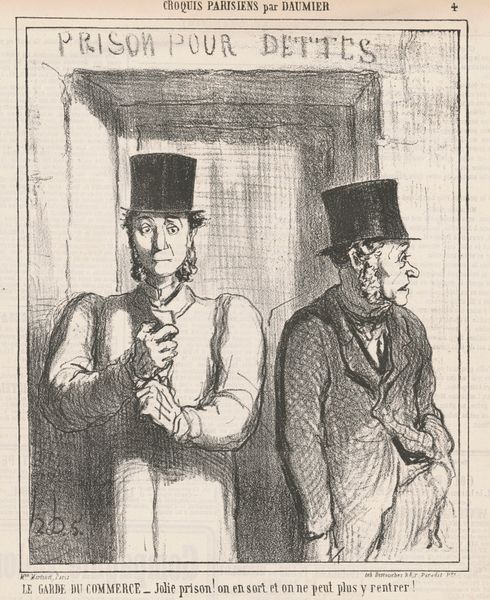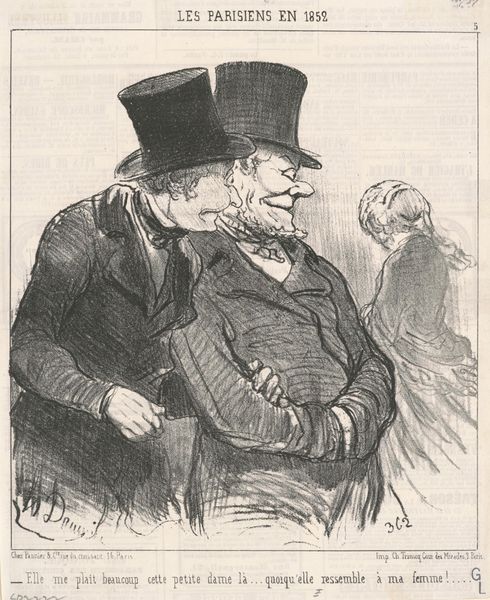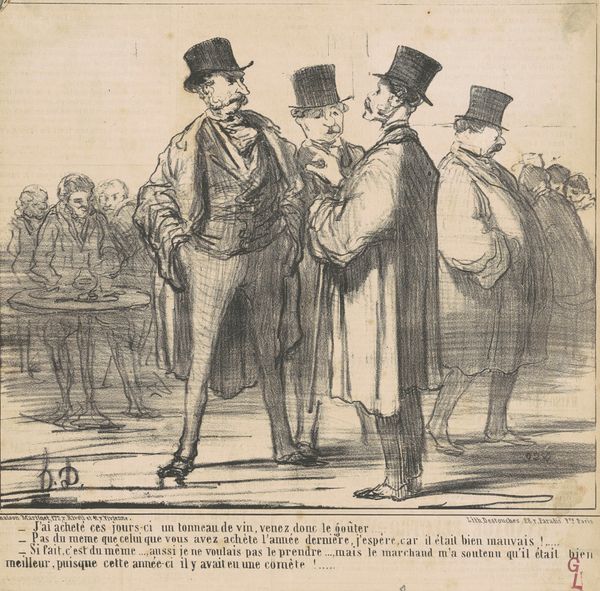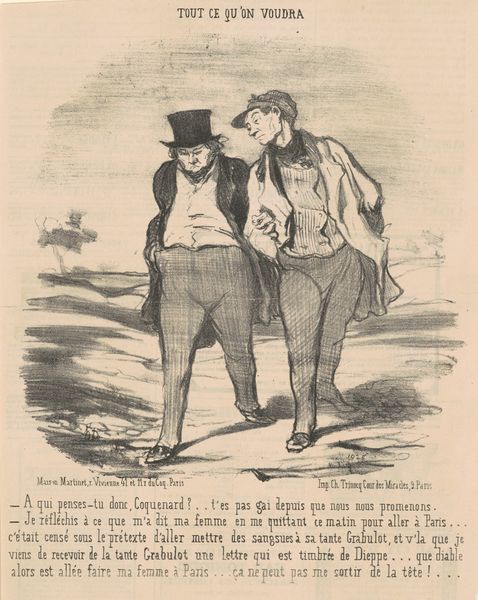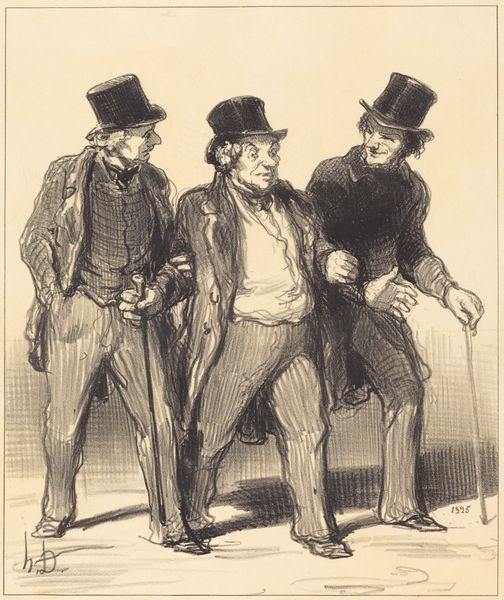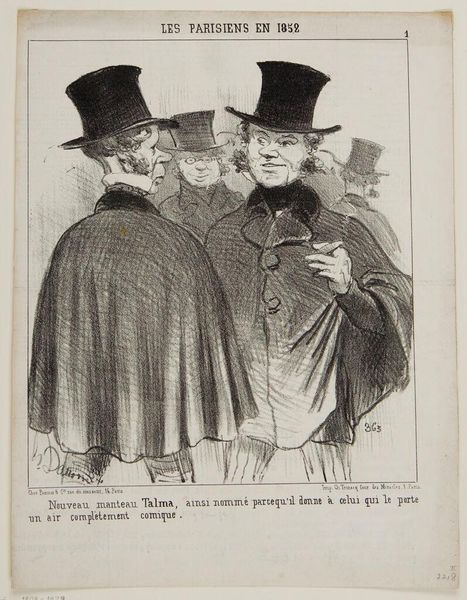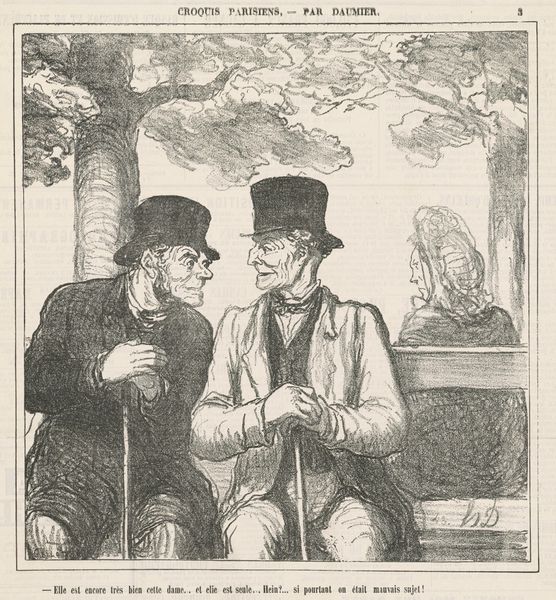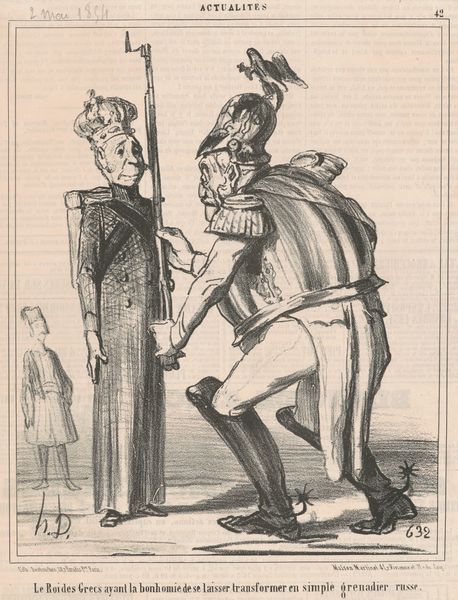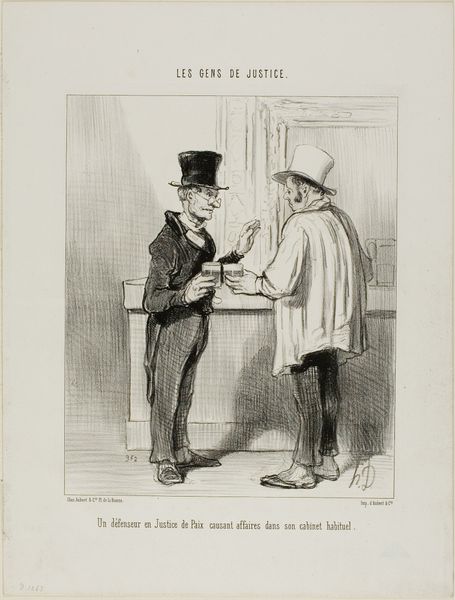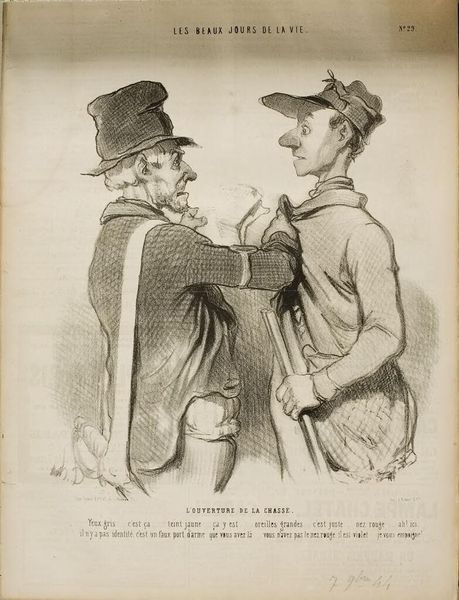
lithograph, print
#
comic strip sketch
#
imaginative character sketch
#
16_19th-century
#
lithograph
# print
#
caricature
#
pencil sketch
#
old engraving style
#
personal sketchbook
#
idea generation sketch
#
sketchwork
#
sketchbook drawing
#
pencil work
#
genre-painting
#
storyboard and sketchbook work
#
realism
Copyright: National Gallery of Art: CC0 1.0
Curator: Honoré Daumier’s lithograph, "Entre Recors," created in 1865, presents a sharply rendered observation on societal disillusionment. Editor: The grays are quite striking, evoking a weary mood; their postures really speak volumes even before you read the inscription at the bottom. They appear… defeated, I would venture. Curator: Note the materials: a relatively inexpensive lithograph made for mass production. Daumier wasn't aiming for the elite art market. He was making political statements and societal critiques readily available to the common person. This was his medium for addressing a changing France. Editor: Exactly. And that accessibility is vital to understanding his role. He aimed directly at class structures. Look at the juxtaposition – the figure on the left with the top hat and the other, clearly of a working class. Daumier emphasizes the ever-widening disparity between social spheres through carefully orchestrated material representation. Curator: The very act of caricature serves a purpose here. By exaggerating physical traits, he satirizes not just individuals, but entire social classes and political ideologies. Notice the precise strokes that define the fabric of their garments. These are more than sketches; they indicate the production conditions for the subjects displayed and are central to understanding class tensions. Editor: I think his genius lies in showing how political structures permeate even personal interactions. The very lines on their faces communicate struggle, anxiety, and an entire socio-economic history weighing down on them. Daumier reveals this pressure using satire, inviting us to reflect on these larger themes, these class differences. The material and method of production support this perfectly. Curator: Indeed. In dissecting Daumier’s work, it’s imperative that we analyze not only subject and skill, but also production processes and dissemination strategies that allow us to decode 19th-century Parisian social life and critique in unprecedented detail. Editor: Right! By bringing his printmaking together with a close reading of historical context, Daumier can stimulate our ideas about art’s function as both historical document and catalyst for social justice in our own era, today.
Comments
No comments
Be the first to comment and join the conversation on the ultimate creative platform.

